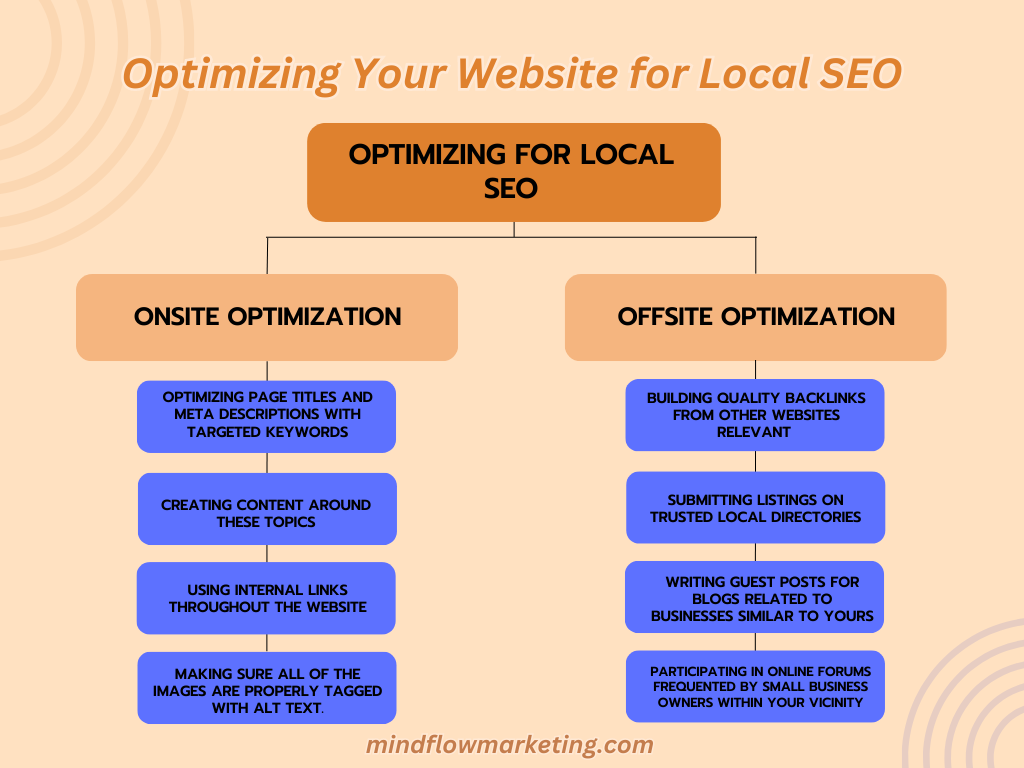Are you looking to increase your local lead generation? Then this guide is for you. Local lead gen can be challenging, but with the correct approach and optimization techniques, it doesn’t have to be.
In this comprehensive guide to local lead generation, we’ll cover everything from understanding how it works to building an online reputation that will help generate leads locally. By following these steps outlined in our guide to local lead generation, you’ll be able to measure the success of your efforts more effectively than ever before.

More Resources :
What is Local Lead Generation?
Local lead generation refers to the process of finding and targeting prospects within a particular geographical region or market segment. This includes keyword research, content creation, SEO optimization, social media promotion, paid advertising campaigns, and other tactics that help businesses capture qualified leads from their target audience.
There are numerous benefits associated with local lead generation for businesses. Businesses can craft their message more effectively and maximize their ROI by targeting a particular area or group. Additionally, they can take advantage of existing customer relationships by utilizing referral programs or loyalty incentives that drive repeat business from satisfied clients. Lastly, local lead generation also allows companies to establish themselves as experts in their field by creating helpful resources such as blog posts or webinars demonstrating expertise in their industry.
Developing a Local Lead Generation Strategy
Developing an effective local lead generation strategy requires a comprehensive understanding of your target audience and their needs. Uncovering the ideal audience is fundamental to devising an effective local lead generation approach. Investigate whom you’re attempting to reach, their necessities, and the best way to contact them. Gathering age, gender, locale, financial status, hobbies, and more can help recognize whom you are attempting to contact.
Additionally, consider their communication channels – social media platforms or email newsletters. Knowing this will help you create content that resonates with your target audience. Here are some further tips as follow:

Setting goals and objectives are essential for measuring success in any marketing endeavor. Regarding local lead generation strategies, these goals should be tailored specifically toward your business’s unique needs, whether increasing brand awareness or driving sales leads from certain geographic areas. Setting clear objectives ensures that all efforts focus on achieving those goals and makes tracking progress easier.
Start by mapping out the steps necessary to achieve each goal set earlier on: which tactics will be used? What resources are needed? Who will be responsible for executing each task? Answering these queries can furnish comprehension of the entire procedure and aid in spotting any prospective hindrances that could be managed expeditiously before they become more serious problems. Remember budget considerations – having a realistic budget allocated towards each tactic can save both money and headaches when it comes time to execute your plan.
Optimizing Your Website for Local SEO

Optimizing your website for local SEO can be a great way to generate more leads from search engine results pages (SERPs). For effective local SEO, start by investigating and selecting relevant terms for your business and area with high search volumes.
This involves finding keywords that are relevant to your business and location and those with high search volumes.
Once you’ve identified the best keywords for your site, it’s time to move on to onsite optimization strategies. These include:
One must actively engage in offsite optimization efforts to maximize local SEO success. This includes:
You should start seeing an increase in lead generation from organic searches and paid advertisements within a few months. All of these initiatives will help boost your brand’s visibility locally and drive more qualified leads online with greater efficiency.
Leveraging Content Marketing for Local Leads
Content marketing can be a powerful tool for local businesses to capture leads. Content creation that resonates with the intended demographic sharing it on social media outlets and reworking existing material to reach new viewers are all ways content marketing can help local businesses get leads.
To create successful content marketing, it is essential to understand the interests and needs of your target audience to produce material that will engage them. This means understanding who they are, their interests, and what information they seek. Once you have this knowledge, you can craft blog posts, videos, podcasts, or other content that appeals directly to them. Incorporating terms pertinent to your venture in the headings and text of your articles will assist search engines with discovering and ordering your material more proficiently.

Promoting Your Content Through Social Media Platforms
After creating great content for your target audience, the next step is promoting it on social media platforms like Facebook or Twitter. Distributing your material on social media sites such as Facebook or Twitter can expand the reach of possible customers and cultivate relationships with them gradually. When sharing links on these sites, use relevant hashtags and images to capture people’s attention quickly and draw them into reading more about what you have written or shared online.
For maximum reach, consider updating existing content with new information and experimenting with different formats, such as infographics or slideshows. Consider taking old blog posts or videos and updating them with new information before re-sharing them across different channels; this will help keep things interesting while giving viewers something new each time they return for more. Additionally, explore other formats like infographics or slideshows, which can be more visually appealing than traditional text-based articles or extended video clips.
Utilizing Paid Advertising for Local Leads
When executed properly, paid advertising can be a great way to reach the desired demographic and spur them into action. To maximize the success of paid ads, it is important to choose the right platforms, craft engaging ads that resonate with your audience, and track performance metrics.
When selecting a platform for paid advertisements, consider cost per click (CPC), available targeting options, and customer demographics. If aiming to reach individuals in a certain location or age group, platforms such as Facebook and Google Ads might be preferable due to their more detailed targeting abilities than other services like LinkedIn or Twitter. Additionally, some platforms may have lower CPC rates than others, so research this before committing to any particular option.
Once you have selected the right platform(s) for your ad campaigns, it’s time to start crafting creative content that resonates with your intended audience. This means utilizing visuals whenever possible and writing copy that speaks directly to potential customers’ needs and interests. Staying abreast of industry trends will enable you to ensure your messaging remains up-to-date and pertinent.
Tracking performance metrics enables advertisers to evaluate their campaigns’ achievements by monitoring crucial indicators such as CPI, CPA, CR, and ROI. By monitoring these numbers regularly, marketers can adjust their strategies to optimize results and improve ROI while avoiding wasted spending on ineffective tactics or channels.
Building an Online Reputation to Generate Leads Locally
Building an online reputation is essential for local businesses to generate leads. By garnering customer reviews, businesses can leverage the power of word-of-mouth to build their online reputation and attract new leads. Collecting customer reviews should be a priority; ask satisfied customers to leave positive feedback on social media platforms or review sites such as Google My Business and Yelp.
Responding quickly and effectively to negative reviews can also help build an online reputation. Do not neglect adverse feedback; take the necessary time to answer civilly and professionally, apologize if appropriate, address any worries the customer expresses, and attempt to reach a settlement that both parties can accept. This will show potential customers that you care about their experience and are willing to go above and beyond to ensure it’s satisfactory.
Measuring the Success of Your Local Lead Generation Efforts
Measuring the success of local lead generation efforts is essential for businesses to understand how their strategies are performing and make adjustments as needed. Establishing benchmarks and key performance indicators (KPIs) can provide a baseline from which progress can be tracked over time. This includes analyzing website traffic, conversions, leads generated, and customer retention rate.
Tracking progress over time helps identify areas where improvements can be made or new strategies implemented to maximize results. Measuring the output of campaigns can help ascertain whether they are yielding a desirable return on investment (ROI). Additionally, tracking progress enables companies to adjust their marketing tactics based on current trends or changes in consumer behavior.
Finally, adjusting strategies as needed is an important part of measuring success regarding local lead generation efforts. Companies should regularly evaluate their performance against established KPIs and use data-driven insights to inform decisions about future campaigns or initiatives.
FAQs about Guide to Local Lead Generation
Conclusion
A comprehensive guide to local lead generation is essential for any business to establish an online presence. With this guide to local lead generation, you’ll be well on your way toward establishing yourself as an authority in your market.
Take your local lead generation to the next level with OptiLocal‘s comprehensive services. Our experienced team can help you optimize your website, increase visibility through SEO and content marketing, and build a positive online reputation.